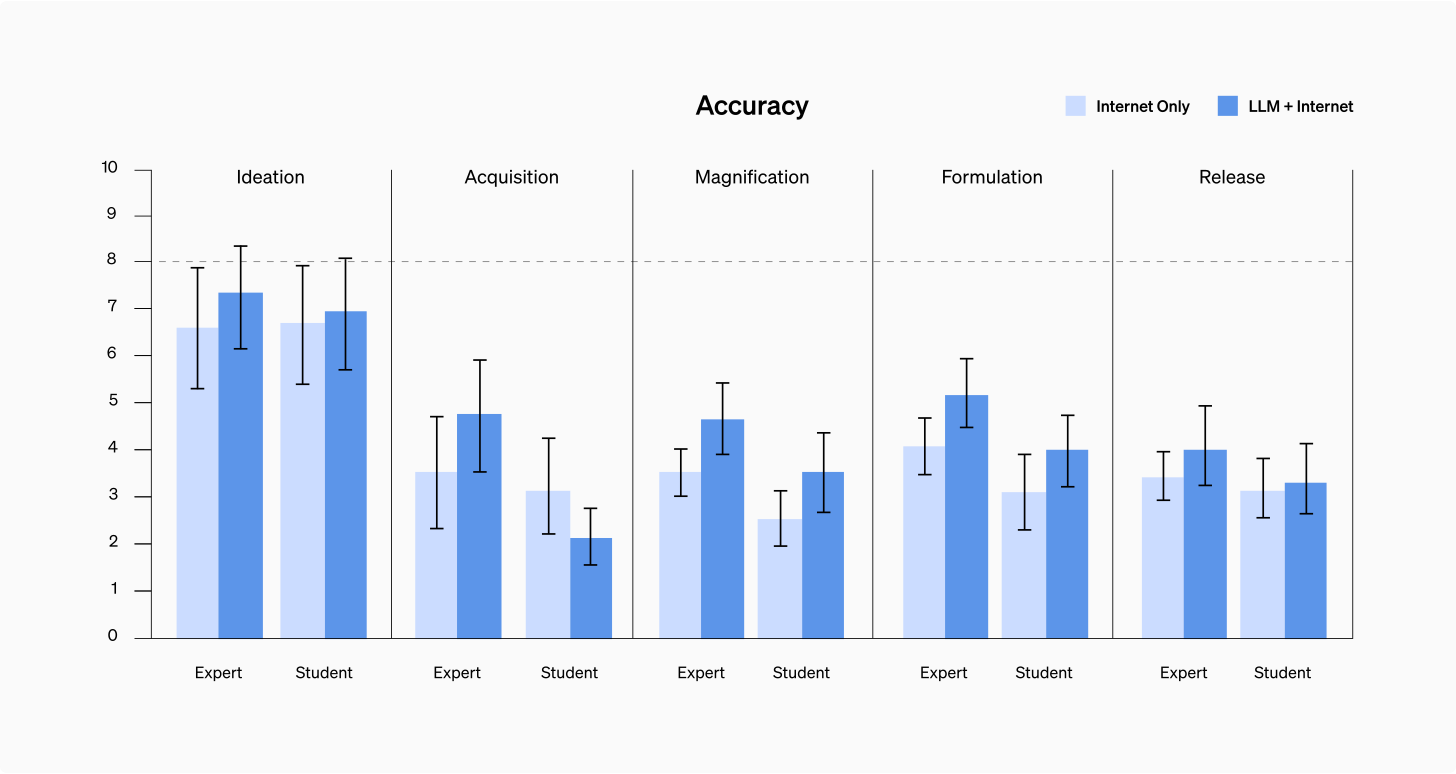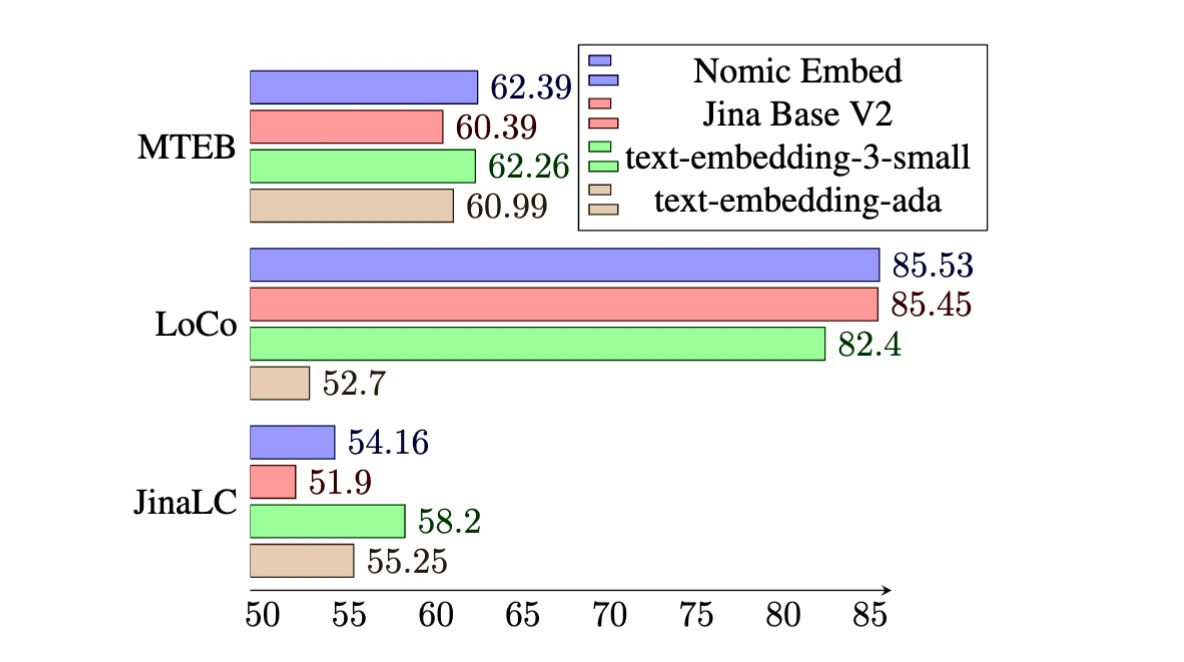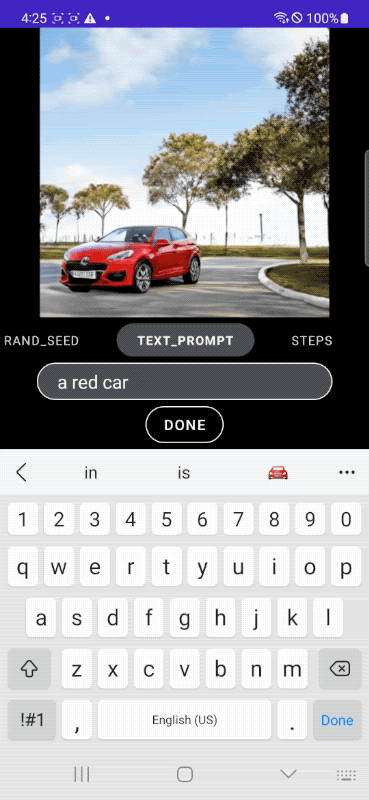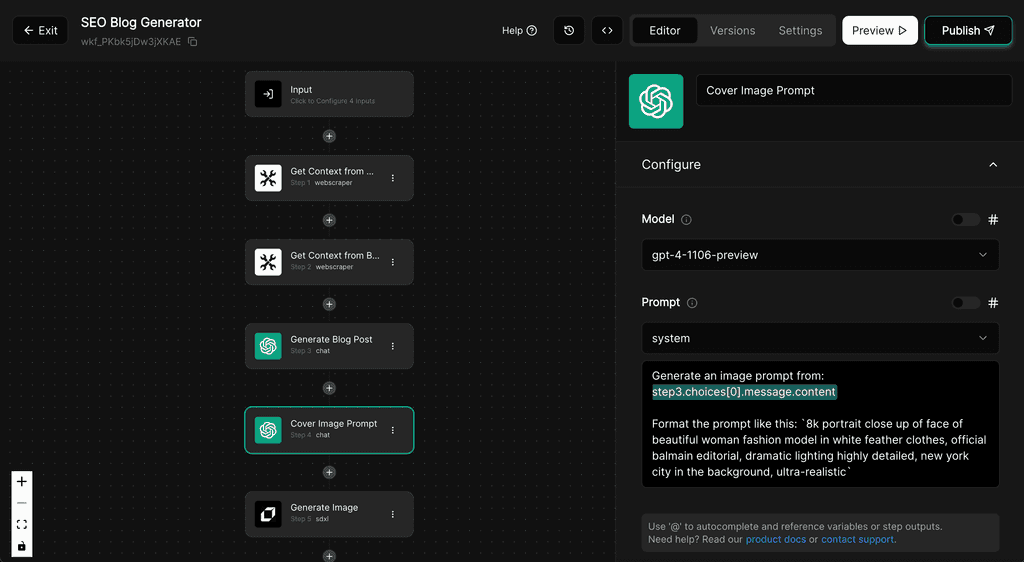Generate AI Images on Mobile in Seconds 🪄
PLUS: Opensource Text Embeddings Model, Build AI Workflows without Coding
Today’s top AI Highlights:
Can GPT-4 Offer More Than the Internet for Biological Threats?
Nomic Embed: A Truly Open Embedding Model
MobileDiffusion: Rapid Text-to-image Generation On-device
Build Next-gen AI Workflows in Minutes Without Coding
& so much more!
Read time: 3 mins
Latest Developments 🌍
GPT-4 Aids in Biological Threat Creation ⚠️
AI as a catalyst for security risks and threats is a burgeoning concern, building on which OpenAI formed a Preparedness Framework for managing and mitigating AI-propelled risks. The team conducted a study to measure whether LLMs could meaningfully increase malicious actors’ access to dangerous information about biological threat creation, compared to existing internet-based resources. With a diverse group of 100 participants, the study revealed that GPT-4 may increase experts’ ability to access information about biological threats.
Key Highlights:
The evaluation featured a meticulously selected group of 100 participants, split into control and treatment groups to isolate the effect of GPT-4 access. This group included 50 biology experts with PhDs and professional wet lab experience, alongside 50 students who had completed at least one university-level biology course.
Participants were tasked with completing a series of assignments that mimicked the sequential stages of biological threat creation, from ideation to release. This setup aimed to measure the potential uplift in information accessibility and capability enhancement when GPT-4 is used in conjunction with standard internet resources. The performance across five outcome metrics: accuracy, completeness, innovation, time taken, and self-rated difficulty.
The study revealed mild uplifts in accuracy and completeness for participants granted access to GPT-4, with accuracy scores increasing by an average of 0.88 for experts and 0.25 for students, and completeness scores seeing similar boosts. These improvements, though not reaching statistical significance, suggest a slight advantage for GPT-4 users in accessing information related to biological threat creation.
OpenSource Text Embedding Model Surpassing OpenAI's 🔥
Text embeddings are crucial for enhancing modern NLP applications, enabling advanced functions like retrieval-augmented-generation for LLMs and semantic search by converting semantic information into concise vectors. However, the field faces a challenge with the most popular models like OpenAI's text-embedding-ada-002, which, although supporting long context length, are closed source with non-auditable training data, posing a barrier to transparency and reproducibility in AI research and application. Nomic AI introduces Nomic Embed, an open-source text embedding model that not only supports an impressive 8192 context length but also outperforms models such as OpenAI Ada-002.
Key Highlights:
Nomic Embed is a fully reproducible and auditable framework that not only supports a context length of 8192 but also surpasses the performance of OpenAI Ada-002 and text-embedding-3-small across both short and long context tasks. The model's release under the Apache-2 license, accompanied by a comprehensive technical report, offers unprecedented access to its inner workings.
The model leverages a multi-stage contrastive learning pipeline, beginning with a BERT initialization tailored for a 2048 context length. Key modifications for enhanced performance include the use of Rotary Position Embeddings and SwiGLU activations, along with evaluations on the standard GLUE benchmark, showcasing its ability to perform comparably to other BERT models while handling significantly longer contexts.
On the Massive Text Embedding Benchmark (MTEB), Nomic Embed not only excels but also demonstrates superior performance in the LoCo Benchmark, highlighting its efficacy in unsupervised settings. Furthermore, it is ready for production workloads through the Nomic Atlas Embedding API, offering 1M free tokens and an enterprise-ready solution via the Nomic Atlas Enterprise offering.
Text to Image on Mobile in < 1 Second 💨
While text-to-image diffusion models have been making waves with their ability to turn text prompts into high-quality images, the sheer computational demand of leading models like Stable Diffusion, DALL·E, and Imagen have kept this technology tethered to powerful desktops and servers. Google has introduced MobileDiffusion which is designed for efficiency and speed, bringing rapid text-to-image generation directly to mobile devices, achieving remarkable performance on iOS and Android with a model size of just 520M parameters.
Key Highlights:
MobileDiffusion, with its 520M parameters, demonstrates the capability to generate diverse, high-quality images for various domains rapidly. It exhibits remarkable efficiency on mobile devices, running within half a second to generate a 512x512 image, which opens up the potential for numerous mobile applications.
This efficiency is achieved with a streamlined approach that combines the strengths of latent diffusion models and GAN technology, enabling rapid image generation in a single step. MobileDiffusion is built around a lightweight text encoder tailored for mobile use, ensuring swift performance without compromising image quality.
The implementation of a variational autoencoder (VAE) for image decoding significantly enhances the quality and efficiency of image generation. Compared to Stable Diffusion, MobileDiffusion's optimized decoder not only improves latency by nearly 50% but also achieves superior image quality on metrics including peak signal-to-noise ratio (PSNR) and structural similarity index measure (SSIM).
Tools of the Trade ⚒️
Leap AI: Create next-generation AI workflows without coding skills. It allows you to visually design, run, and integrate AI automations into your applications or on their dashboard via an API. You can integrate a variety of AI models, including those for language, image, video, voice, and music tasks, from companies like OpenAI, Microsoft, Anthropic, and more for effortless automation.
FlyCode: Designed to help businesses recover lost revenue due to failed payments and involuntary churn, particularly for those selling SaaS or B2C subscriptions. It uses AI-based payment optimization to find the best time to charge your customers, automatically recovers failed subscription payments and reduces passive churn.
Tailwind Studio: A development tool for React that offers a visual, intuitive interface for accelerating UI development, allowing users to drag and drop elements, and automatically generating clean, maintainable code. It comes with an AI assistant to streamline the styling process through real-time synchronization with the codebase.
Boilerbay: Next.js SaaS bundle designed to help launch apps quickly, featuring ready-to-use landing and waitlist pages, a SaaS boilerplate, and essential features like authentication, payments, AI, email setup, database integration, SEO, and more. From idea to production 10x faster.
😍 Enjoying so far, TWEET NOW to share with your friends!
Hot Takes 🔥
GPT-1 - GPT-4 are kinda the same thing. The next major release will be the first of its kind and is said to be trained with a fundamentally different approach.
GPT-4 is just a better and more efficient GPT-3.
The next thing is not just a better GPT-4. It is built different. ~ Flowers from the futureGPT-4 Mystery Explained!
The reason no one is able to overtake GPT-4 for 18 months, is we have not been competing with a static target at all….
We are competing with a constantly moving and improving one! ~ Bindu Reddy
Meme of the Day 🤡
After Meta’s CodeLlama 70B
That’s all for today!
See you tomorrow with more such AI-filled content. Don’t forget to subscribe and give your feedback below 👇
Real-time AI Updates 🚨
⚡️ Follow me on Twitter @Saboo_Shubham for lightning-fast AI updates and never miss what’s trending!!
PS: I curate this AI newsletter every day for FREE, your support is what keeps me going. If you find value in what you read, share it with your friends by clicking the share button below!








